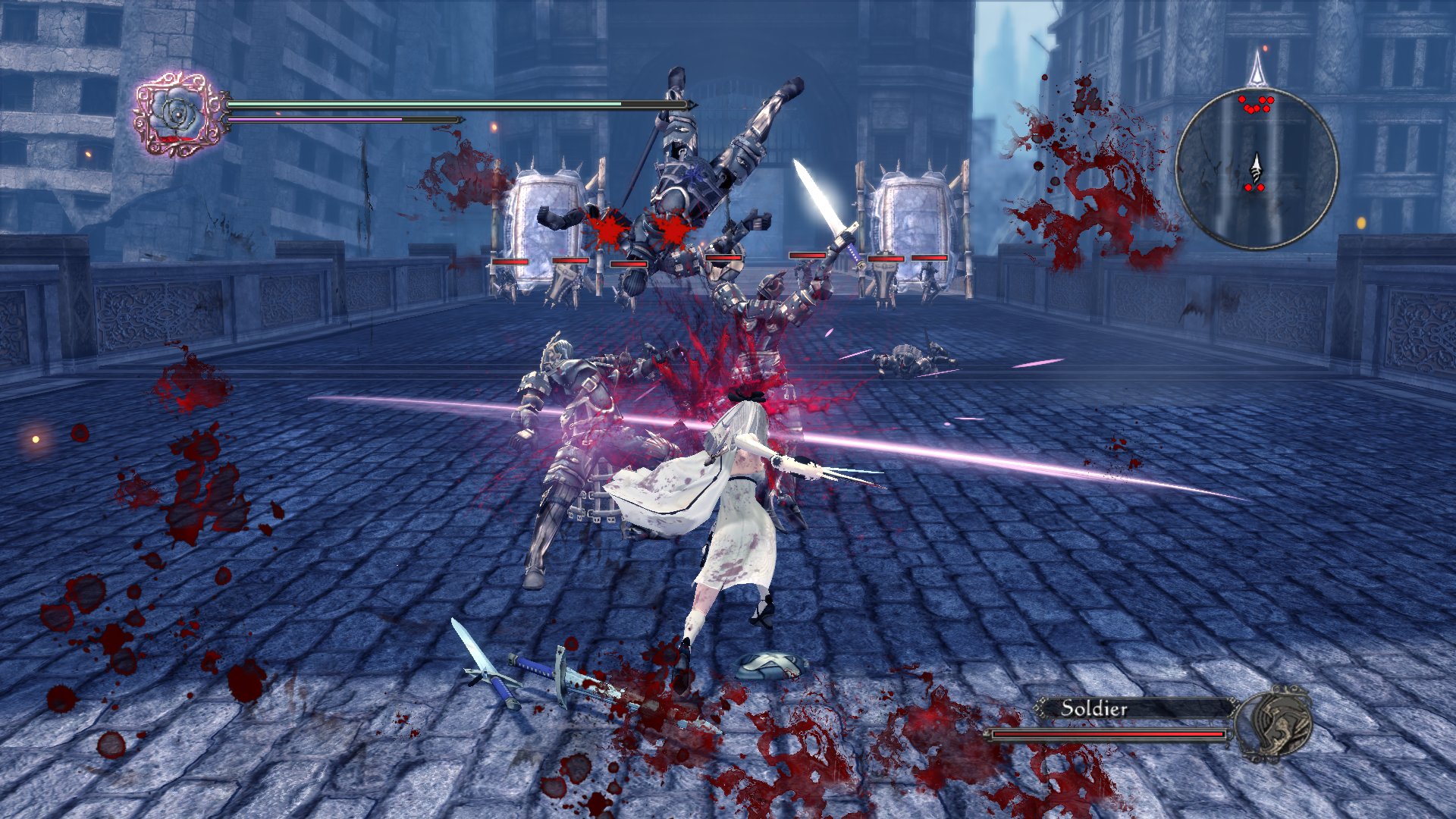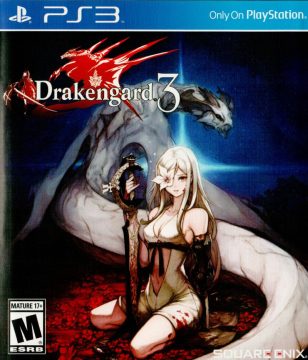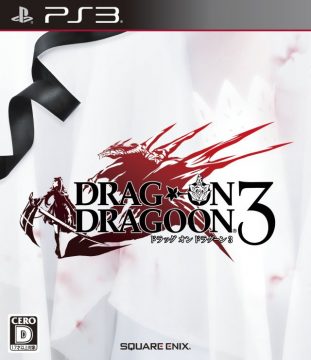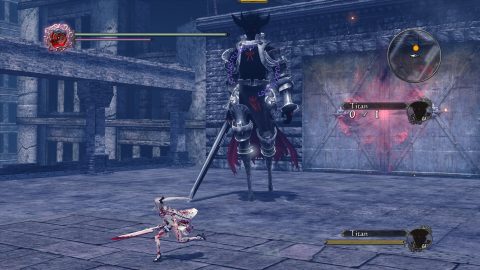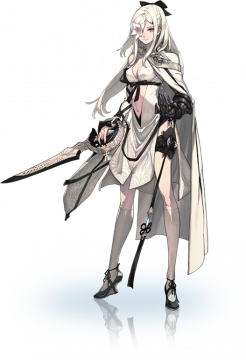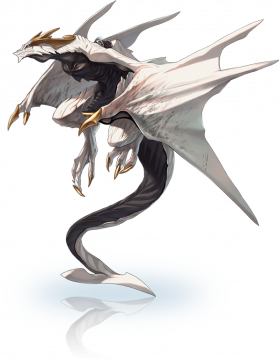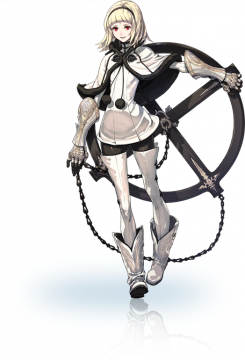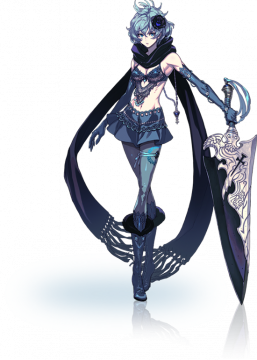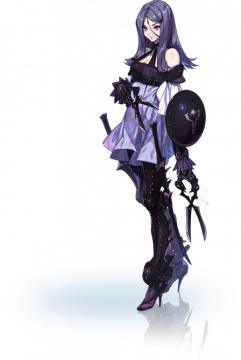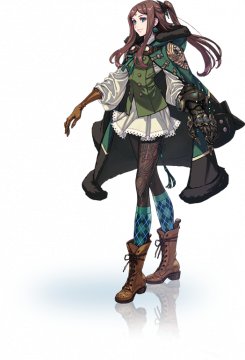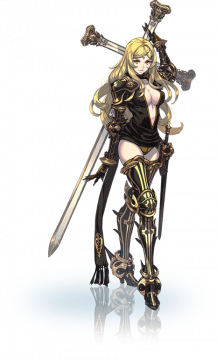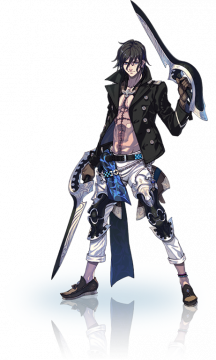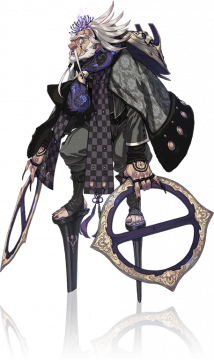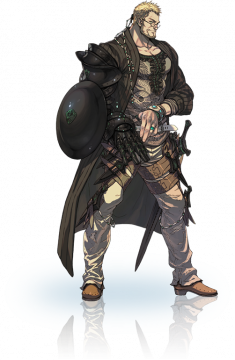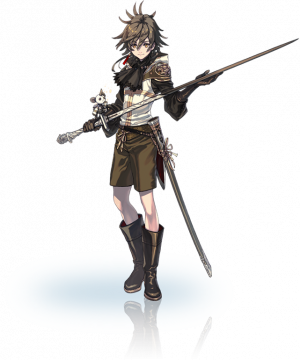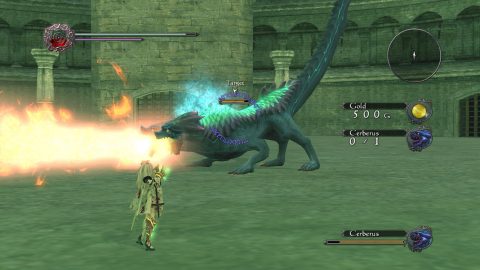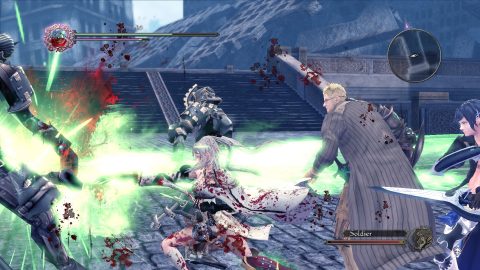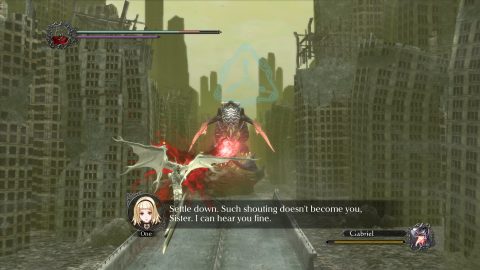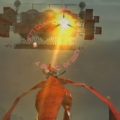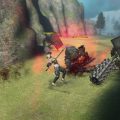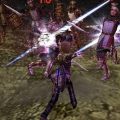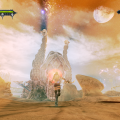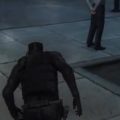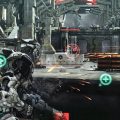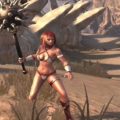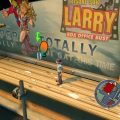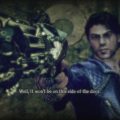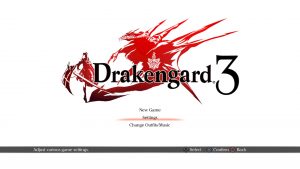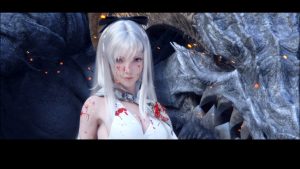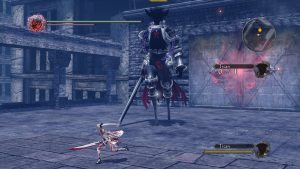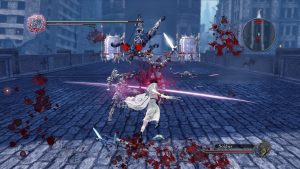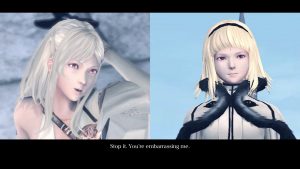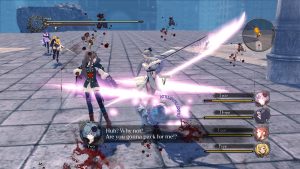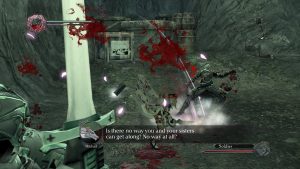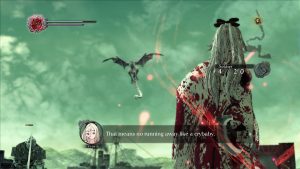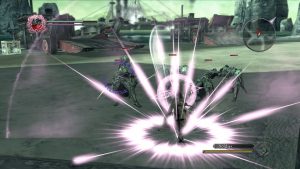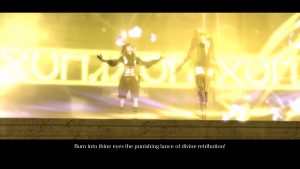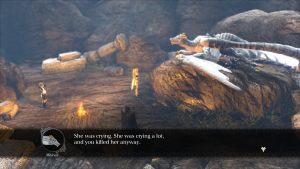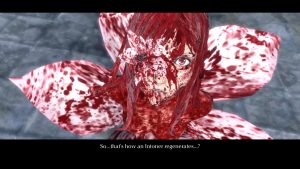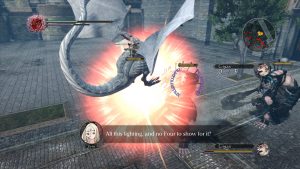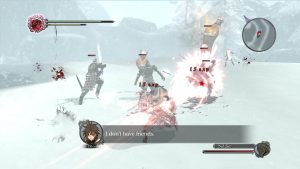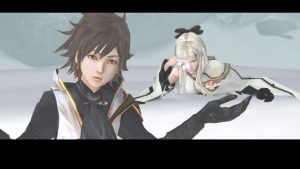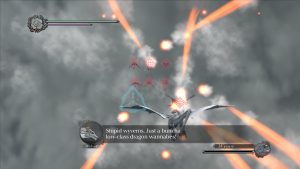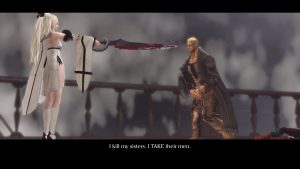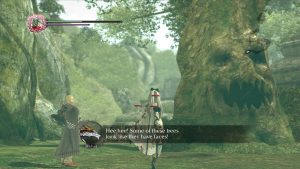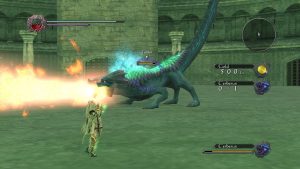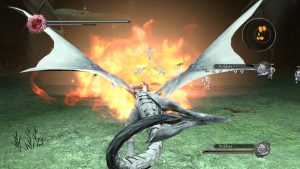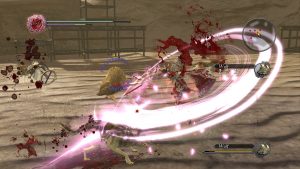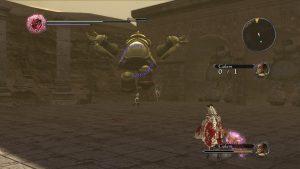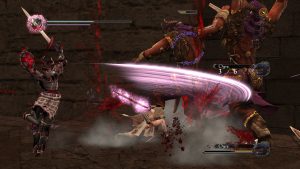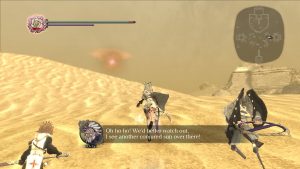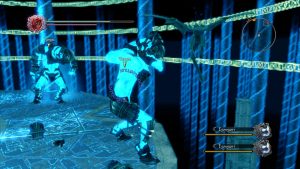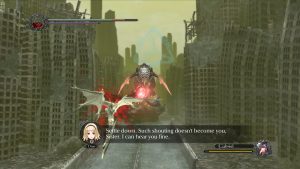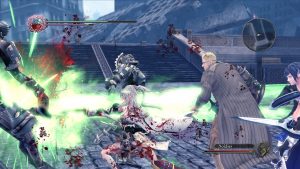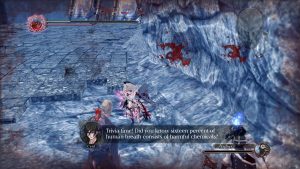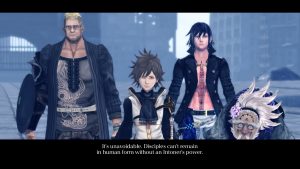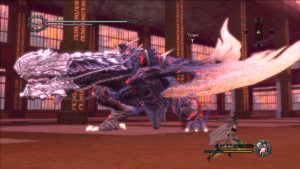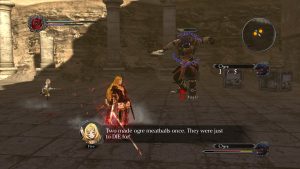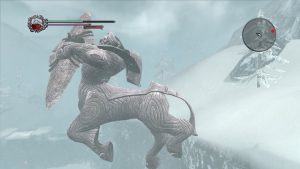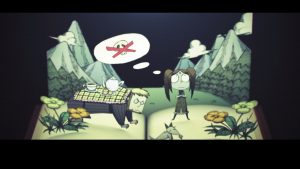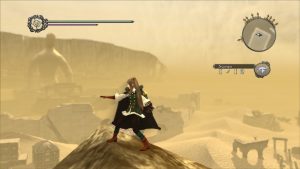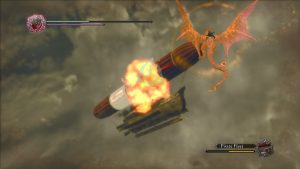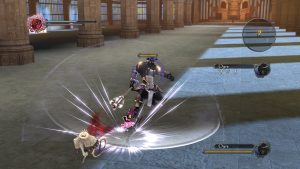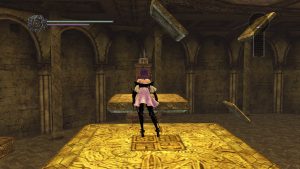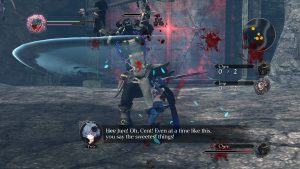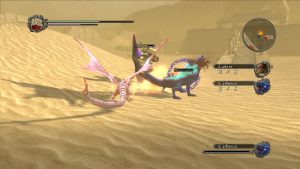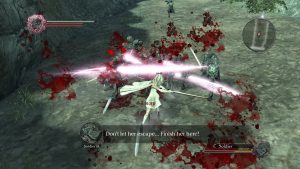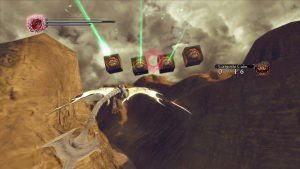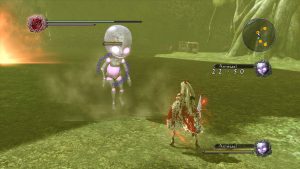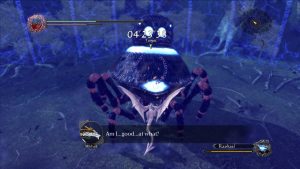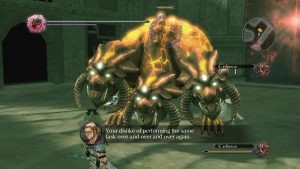- Drakengard
- Drakengard 2
- Drakengard 3
“Now…let us sing of the world’s end.”
The company behind Drakengard, Cavia, was disbanded in 2010, absorbed into their parent company, AQ Interactive. But the rights to the series were held by Square Enix, and someone at the company saw its potential after the success of Nier, the company’s swan song. With some of the former staff brought on to help with the project, including the first game’s director, Yoko Taro, and Access Games set to develop, the publisher commissioned this third entry to the series, released at the end of 2013, exclusively for the PlayStation 3.
The third game in the series actually serves as prologue. Set a hundred years before the original, the world is ravaged by war and chaos, until the intoners, women imbued with the power of magical song, bring peace to the land. Each intoner is aided by a male disciple who serves her and augments her powers. One day, Zero, the oldest intoner, decides to take out the others, with the help of a dragon named Michael. Her first attempt went awry, leaving Michael mortally wounded and Zero in bad shape. After a year of recuperation, she sets out again, with a new dragon, Mikhail, by her side.
Yoko Taro and scenario writers Sawako Natori & Hana Kikuchi crafted a cynical, goofy narrative for this game. The story balances dramatic shifts between levity and sentimentality, “censoring” itself in a 4th wall breaking stunt one instant and then presenting its mawkish, dark drama in the next, and the host of sociopaths that make up the cast are as bawdy and ridiculous as any others in the series.
Characters
Zero (Maaya Uchida/Tara Platt)
This gruff, coarse woman has a flower growing out of her right eye and the mouth of a sailor. She seeks to kill her sisters and put an end to the intoners but the reason why is a mystery. As she defeats her sisters, she collects their disciples for her own use.
Mikhail (Nao Toyama/Cindy Robinson)
Mikhail is the dragon reincarnated after Micheal’s demise in the prologue, lacking his memories. He is immature, drawing Zero’s ire, and often urges her to resolve things peacefully, instead of jumping to murder. He really hates wyverns.
The Intoners
One (Rie Tanaka/Lauren Landa)
One is the taciturn leader of the intoners. She seeks to bring stability to the world through their rule. Unlike her sisters, One lacks a disciple of her own but makes up for it by having a dragon, Gabriel, instead. She sits on her throne from Cathedral City.
Two (Chiwa Saito/Kate Higgins)
A cheerful, charitable woman deeply in love with her disciple, Cent, she’s seemingly withdrawn from the world by the time she’s seen in the main game. She lives in the Land of Sands.
Three (Mamiko Noto/Mela Lee)
While popular with soldiers, Three experiments on them in order to create many of the monsters in the game. The passion she has for her work comes out when she talks about it. Her home is the Land of Forests.
Four (Ayana Taketatsu/Cristina Valenzuela)
Four fights for justice and truth, at least on the surface. Probing deeper reveals that her idealism is petty and shallow, and she is more motivated by jealousy and anger than anything else. She rules over the Land of Mountains.
Five (Shizuka Itou/Megan Hollingshead)
This tall woman with a lusty appetite loves to overindulge in every way imaginable and she leans on her disciple, Dido, to satisfy her, something he resents. She makes her home in the Land of Seas.
The Disciples
Cent (Ryotaro Okiayu/Liam O’Brian)
Cent is a pretty guy who’s all confidence and no brains. His devotion to Two has him picking up the slack for her catatonic state. He has a habit of dropping trivia and facts that are incredibly wrong, much to the chagrin of the others in his party.
Octa (Chufurin/Todd Haberkorn)
Octa serves Three as is his duty. Her experiments give him pause, as she seems more interested in her work rather than him. The dirty old man of the disciples, there literally isn’t anything he can’t turn into a sexual innuendo.
Decadus (Kazuhiko Inoue/Cam Clarke)
Decadus is a masochist. Every verbal slight and physical pain sets him off and the other characters make fun of him for it, which also gets him going. Like his intoner, Four, he tries to hide behind a noble, upstanding demeanor.
Dido (Mitsuki Saiga/Yuri Lowenthal)
This sick young man seethes at having to serve Five, often insulting her to her face. On the surface, Dido seems calm if sarcastic, but being confronted with ugliness or suffering brings out the cackling sadist in him.
Like the other two in the series, the game plays like Koei-Tecmo’s Musou series. Zero has 4 types of weapons, able to switch at them on the fly in battle to keep her combo going, and each one has a unique feel. Stronger weapons of each type are found in chests during the game or in the store between missions, and each one can be upgraded with the right item and amount of gold. When the rose in the upper left of the screen fills up enough, she can activate Intoner mode, allowing her to go berserk on enemies. She also has defensive options, blocking, dodging, and parrying. A stamina meter regulates these moves, as well as her more powerful strikes. These mechanics work, but they lack polish. The camera is wonky, easily confused near a wall, and the lock on mechanic doesn’t help either, homing in on a far away enemy instead of closer ones or cropping Zero off screen when locked on to a tall enemy. She’s also too easily interrupted in the middle of a combo. Long range enemies like archers can stop her in her tracks with a succession of arrows, leaving her open to attack. It leads to Zero feeling both strong and weak simultaneously. She can cut through scores of soldiers and splatter their blood across the screen, but the right mix of foes can sap her health seemingly at any moment.
The level design is simpler compared to the earlier games. Most stages funnel Zero from arena to arena to take out mobs of enemies, resembling more 3d beat-em-ups like Spikeout rather than the battlefields of Musou games. Also, the Ace Combat-inspired levels have been replaced by rail shooter segments and the occasional boss fight or arena on dragon back. To break up the combat, Access Games peppered in platforming, light puzzle solving, and environmental hazards through out, and optional challenge stages provide tests for players who want more, even if the time limit on some of them is vanishingly tight. DLC prologue chapters mix things up even more. They star Zero’s sisters and each chapter has a nominal twist to the usual action. The most unique stage is a rhythm minigame that’s ridiculously hard. However, by the time it ends, the handful of stages & concepts the game offers have been reiterated, mirrored, and flipped in just about every way imaginable. It feels like a step down from the previous games, and unlike Nier, there aren’t any clever surprises with this repetition. Throw in a late game grind before the ending that involves earning gold and replaying stages to grind out any missing weapons to move forward, and the game feels stretched too thin for its own good.
In addition to the repetition, Drakengard 3 can be charitably described as rough around the technical edges. The frame rate isn’t stable (especially when physics objects are involved), load times can get long, and screen tearing is prevalent. It can feel underwhelming to play, on top of its other problems. Luckily, a little bit of emulation can go a long way, in this instance. RPCS3 has been able to run the game well for a while now, with the ability to turn on V-sync and other tweaks. These additions don’t smooth over every last rough edge, but they improve upon the experience, compared to real hardware. These technical deficiencies are frustrating because there’s a lot going on in the visual design of the game. Foes come in all shapes and sizes, some minibosses towering over Zero. A city full of busted skyscrapers is home to a cathedral. Hulking fortresses float in the sky, held aloft by balloons and flanked by glowing arcane symbols. It isn’t the prettiest game, but it still manages to evoke a sense of a destroyed world struggling to rebuild, full of ruins both familiar and alien at the same time.
The music and sound fares much better. Keiichi Okabe and his music studio, MONACA, Inc. were bought on to compose the soundtrack. While it resembles Nier a bit, Drakengard 3 has enough subtle twists to feel distinct from that game’s OST. It employs the Chaos language, a linguistic mishmash created by vocalist Emi Evans for Nier, helps further the ethereal feeling of the game and knits the two series closer together. The voice acting is wonderful in Japanese and in English. The disciples’ voice actors, in particular, are clearly enjoying how utterly bawdy and over the top their characters are. Their banter during levels is hilarious and enchanting.
Drakengard 3 was released in Japan in December 2013, followed by a Chinese release a month later in January and in North America and Europe in May 2014. North America and Europe got collector’s editions of the game, packaged with select pieces of DLC, a soundtrack sampler, and a poster. These editions also included a hard copy of prologue short stories released online in the run up to the game’s release. The DLC was plentiful, with various costumes based on Nier & Drakengard for Zero & Mikhail (some with buffs like damage reduction or a larger parry window,) packs of alternate music remixed from the earlier games, and the sisters’ prologue chapters. While these chapters aren’t necessarily vital to the story, they fill in some of the gaps that the main game doesn’t provide, such as giving a clear reason for Two’s withdrawn state, and the in-game rewards are helpful in mitigating the late game grind. The Japanese voice track was locked behind a paid download or as part of the collector’s edition, which was rather controversial at the time and annoying today, as the PS3’s marketplace slowly disappears. Interestingly, the definitive ending, the one that actually connects to the original game, isn’t in the game proper. Rather, it was released as a novel in August 2014, titled Drag-on Dragoon 3 Story Side. The book never saw release in other territories, and there have been no fan translations to date, only summaries of its contents.
Drakengard 3 is a rough gem, one whose strengths outweigh its weaknesses. It is a middling game, with mechanics that needed some extra work, overly recycled stages, and technical problems. And yet, the story and the characters in it are compelling enough to rise above its faults. Nier and Drakengard 3 resemble each other in that way, but only one attained any lasting success. Nier’s remake did a lot to clean it up, even integrating its previous novella-only ending into the mix. One has to wonder how much of a boost a game like Drakengard 3 – or the rest of the series for that matter – would get with the same time and attention.
